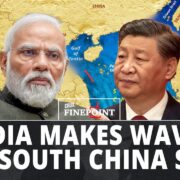
Crafting a Captivating Book Preview: Trailer and Teaser Tips
In today’s competitive publishing industry, it is crucial for authors to find effective ways to market their books and stand out from the crowd. One powerful tool that can help achieve this is a book preview. A book preview is a short video that provides a glimpse into the story, characters, and themes of a book, enticing potential readers and generating interest in the book.
Book previews are an essential part of a comprehensive marketing strategy for several reasons. Firstly, they allow authors to showcase their writing style and storytelling abilities in a visually engaging format. This can be particularly effective in capturing the attention of potential readers who may be more inclined to watch a video than read a lengthy book description.
Secondly, book previews provide an opportunity for authors to create a strong emotional connection with their audience. By using visuals, music, and voiceover narration, authors can evoke the desired emotions and create a memorable experience for viewers. This emotional connection can help readers feel more invested in the story and increase their likelihood of purchasing the book.
Key Takeaways
- Book previews are important to generate interest and excitement for your book.
- Trailers are longer and provide more information than teasers.
- A compelling storyline is crucial for a successful book preview.
- Music and sound effects can enhance the emotional impact of your trailer.
- A captivating voiceover script can help engage your audience.
Understanding the Difference Between a Trailer and a Teaser
Before diving into the process of creating a book preview, it is important to understand the difference between a trailer and a teaser. A book trailer is a longer video that provides a more comprehensive overview of the book, including key plot points, characters, and themes. It is typically around one to two minutes in length and aims to give viewers a clear understanding of what they can expect from the book.
On the other hand, a teaser is a shorter video that serves as a sneak peek or teaser for the book. It is usually around 30 seconds to one minute in length and focuses on creating intrigue and curiosity without revealing too much about the story. Teasers are often used as promotional tools leading up to the release of a book or as part of a larger marketing campaign.
Both trailers and teasers have their own unique benefits and can be used in different stages of a book’s marketing journey. Trailers are ideal for introducing the book to a wider audience and generating interest, while teasers are great for building anticipation and excitement among existing fans or potential readers.
Crafting a Compelling Storyline for Your Book Preview
One of the most important aspects of a book preview is the storyline. A compelling storyline can captivate viewers and leave them wanting more, ultimately driving them to purchase the book. When crafting the storyline for your book preview, it is crucial to focus on the key elements that make your book unique and intriguing.
Start by identifying the main conflict or problem that drives the story. This could be a personal struggle, an external threat, or a mystery that needs to be solved. Highlighting this conflict in your book preview will immediately grab viewers’ attention and make them curious about how it will be resolved.
Next, introduce your main characters and their motivations. Viewers should be able to get a sense of who the protagonist is and what they are trying to achieve. This will help create an emotional connection between the viewers and the characters, making them more invested in the story.
Finally, tease some of the key plot points or twists without giving away too much. The goal is to create intrigue and curiosity, leaving viewers eager to find out what happens next. However, it is important to strike a balance between revealing enough to generate interest and keeping enough mystery to entice readers to actually read the book.
Choosing the Right Music and Sound Effects for Your Trailer
| Metrics | Description |
|---|---|
| Engagement | The number of views, likes, and shares on the trailer |
| Retention | The percentage of viewers who watch the entire trailer |
| Conversion | The number of viewers who take action after watching the trailer, such as purchasing a ticket or subscribing to a service |
| Brand Awareness | The increase in brand recognition and recall after watching the trailer |
| Emotional Response | The level of emotional impact the trailer has on viewers, measured through surveys or focus groups |
Music and sound effects play a crucial role in setting the tone and atmosphere of your book preview. They can enhance the emotional impact of the visuals and help create a memorable experience for viewers. When selecting music and sound effects for your trailer, it is important to consider the genre and themes of your book.
Start by identifying the overall mood you want to convey. Is your book a thrilling mystery? A heartwarming romance? A dark fantasy? The music and sound effects should align with the mood and genre of your book to create a cohesive and immersive experience for viewers.
Consider using instrumental music that complements the visuals without overpowering them. Instrumental tracks are often more versatile and can be tailored to match the pacing and emotional beats of your trailer. Look for tracks that have a strong emotional impact and evoke the desired feelings in your audience.
In addition to music, sound effects can also add depth and realism to your trailer. For example, if your book is set in a bustling city, you can include sounds of traffic, footsteps, or sirens to create a more immersive experience. However, be mindful not to overwhelm the viewers with too many sound effects, as it can distract from the main message of the trailer.
Tips for Writing a Captivating Voiceover Script
A well-written voiceover script can greatly enhance the impact of your book preview. It can provide additional context, highlight key themes or messages, and create a sense of urgency or excitement. When writing a voiceover script for your trailer, consider the following tips:
Firstly, keep it concise and focused. A voiceover script should be short and to the point, delivering the key messages in a clear and compelling manner. Avoid unnecessary details or lengthy explanations that may bore or confuse viewers.
Secondly, make sure the script aligns with the overall tone and mood of your book. If your book is humorous and lighthearted, the voiceover script should reflect that. On the other hand, if your book is dark and suspenseful, the script should convey that sense of tension and intrigue.
Thirdly, consider using a professional voiceover artist to bring your script to life. A skilled voiceover artist can add depth and emotion to your words, making them more impactful and engaging. If you choose to do the voiceover yourself, make sure to practice and record in a quiet environment to ensure clarity and quality.
Lastly, remember to include a call to action at the end of the script. This can be as simple as encouraging viewers to visit your website, sign up for your newsletter, or pre-order the book. The call to action should be clear and compelling, giving viewers a reason to take the next step and engage further with your book.
Using Visuals to Enhance Your Book Preview: Dos and Don’ts
Visuals are a powerful tool in creating an engaging and memorable book preview. They can help bring the story to life, showcase the setting and characters, and create a visual representation of the themes and emotions of your book. However, it is important to use visuals effectively and avoid common pitfalls.
Firstly, choose visuals that are high-quality and visually appealing. Blurry or low-resolution images can detract from the overall quality of your trailer and give a negative impression of your book. Invest in high-quality images or hire a professional designer to create custom visuals that align with your brand and the tone of your book.
Secondly, consider using a mix of different types of visuals. This can include book cover images, illustrations, stock photos, or even short video clips. Variety in visuals can help keep viewers engaged and add visual interest to your trailer.
Thirdly, be mindful of copyright restrictions when using visuals. Make sure you have the necessary permissions or licenses for any images or videos used in your trailer. There are many websites that offer royalty-free images and videos that can be used for commercial purposes.
Lastly, avoid overcrowding your trailer with too many visuals. Each visual should serve a purpose and contribute to the overall message or story you are trying to convey. Too many visuals can overwhelm viewers and dilute the impact of your trailer.
Incorporating Author Interviews and Reviews in Your Trailer
Including author interviews and reviews in your book preview can add credibility and authenticity to your marketing efforts. Author interviews provide an opportunity for viewers to get to know you as the author and understand your motivations and inspirations behind the book. Reviews, on the other hand, offer social proof and can help build trust with potential readers.
When incorporating author interviews in your trailer, consider focusing on the key themes or messages of your book. Share personal anecdotes or insights that will resonate with viewers and make them feel more connected to you as an author. Keep the interview concise and engaging, avoiding lengthy explanations or tangents.
Reviews can be included as text overlays or voiceover narration in your trailer. Choose reviews that highlight the strengths and unique aspects of your book. If possible, include reviews from reputable sources or well-known authors in your genre to add credibility.
It is important to strike a balance between showcasing positive reviews and maintaining authenticity. Including a mix of positive and constructive reviews can demonstrate that you value feedback and are open to improvement. This can also help potential readers make a more informed decision about whether your book is right for them.
The Importance of Timing and Pacing in Your Book Preview
Timing and pacing are crucial elements in creating an effective book preview. The timing refers to the overall length of your trailer, while pacing refers to the speed and rhythm at which the visuals, music, and voiceover narration are presented.
When it comes to timing, it is important to keep your trailer concise and focused. Most book previews are between one to two minutes in length, although shorter teasers can be as brief as 30 seconds. Research has shown that viewers have a short attention span, so it is important to capture their interest quickly and maintain it throughout the duration of the trailer.
Pacing is equally important in keeping viewers engaged. A slow-paced trailer can bore viewers, while a fast-paced trailer can overwhelm them. Aim for a balanced pace that allows viewers to absorb the information and emotions presented in the trailer without feeling rushed or bored.
Consider using visual and audio cues to guide the pacing of your trailer. For example, faster cuts and transitions can create a sense of urgency or excitement, while slower transitions can create a more contemplative or emotional tone. Similarly, matching the rhythm of the music and voiceover narration to the visuals can help create a cohesive and engaging experience for viewers.
Distributing Your Book Preview: Where and How to Share It
Once you have created your book preview, it is important to distribute it effectively to reach your target audience. There are several platforms and channels where you can share your book preview, each with its own benefits and considerations.
Firstly, consider sharing your book preview on social media platforms such as YouTube, Facebook, Instagram, or Twitter. These platforms have a wide reach and allow for easy sharing and engagement with viewers. Make sure to optimize your video for each platform by using appropriate tags, descriptions, and hashtags.
Secondly, leverage your existing author platform or website to share your book preview. This can include embedding the video on your website or blog, sending it to your email subscribers, or featuring it in your author newsletter. Your existing audience is already interested in your work and can help spread the word about your book preview.
Thirdly, consider reaching out to book bloggers or influencers in your genre and ask if they would be interested in featuring your book preview on their platforms. This can help you reach a wider audience and tap into their existing fan base. Be sure to personalize your outreach and explain why you think their audience would be interested in your book.
Lastly, consider running paid advertising campaigns to promote your book preview. Platforms such as Google Ads or Facebook Ads allow you to target specific demographics or interests, ensuring that your book preview reaches the right audience. Set a budget and monitor the performance of your ads to optimize your results.
Measuring the Success of Your Book Preview: Metrics to Track
Tracking the success of your book preview is crucial in evaluating the effectiveness of your marketing efforts and making informed decisions for future campaigns. There are several key metrics that you can track to measure the success of your book preview.
Firstly, track the number of views or plays your book preview receives. This will give you an indication of how many people are watching your video and engaging with your content. Keep in mind that not all views will result in book sales, but it is still an important metric to monitor.
Secondly, track the click-through rate (CTR) of any links or calls to action included in your book preview. This will tell you how many viewers are taking the next step and visiting your website, signing up for your newsletter, or pre-ordering your book. A high CTR indicates that your book preview is effectively driving viewers to take action.
Thirdly, monitor the engagement metrics of your book preview, such as likes, comments, and shares on social media platforms. This will give you an indication of how viewers are responding to your video and whether it is resonating with them. Engaging with viewers in the comments section can also help build a community around your book and foster a sense of connection.
Lastly, track the conversion rate of your book preview. This refers to the percentage of viewers who go on to purchase your book after watching the preview. This can be tracked through affiliate links, coupon codes, or other tracking mechanisms. A high conversion rate indicates that your book preview is effectively convincing viewers to make a purchase.
In conclusion, book previews are a powerful marketing tool that can help authors generate interest and excitement for their books. By crafting a compelling storyline, choosing the right music and visuals, incorporating author interviews and reviews, and distributing the preview effectively, authors can create a memorable and engaging experience for potential readers. By tracking key metrics, authors can measure the success of their book previews and make informed decisions for future marketing campaigns. So, if you’re an author looking to boost your book’s visibility and reach a wider audience, consider creating a book preview and harnessing the power of visual storytelling.
FAQs
What is a book trailer or teaser?
A book trailer or teaser is a short video that promotes a book, similar to a movie trailer. It is designed to entice potential readers and generate interest in the book.
Why should I create a book trailer or teaser?
Creating a book trailer or teaser can help you reach a wider audience and generate interest in your book. It can also be a fun and creative way to promote your work.
What should I include in my book trailer or teaser?
Your book trailer or teaser should include a brief summary of the book, as well as some of its key themes and characters. It should also feature visually appealing images or video clips, and a compelling soundtrack.
How long should my book trailer or teaser be?
Your book trailer or teaser should be no longer than two minutes. It should be short enough to hold the viewer’s attention, but long enough to convey the key themes and messages of your book.
What software or tools do I need to create a book trailer or teaser?
There are many software and tools available for creating book trailers and teasers, including iMovie, Adobe Premiere Pro, and Animoto. You can also hire a professional video editor to create your trailer for you.
Where should I post my book trailer or teaser?
You should post your book trailer or teaser on your website, social media platforms, and video sharing sites such as YouTube and Vimeo. You can also include it in your book’s marketing materials and press releases.



















I don’t think the title of your article matches the content lol. Just kidding, mainly because I had some doubts after reading the article.